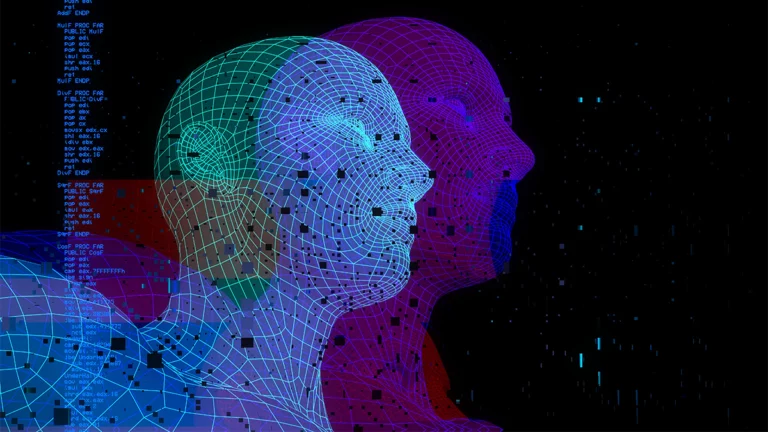We have often turned to write assistants to correct our essays, research papers, and any topic we have worked on. You will be surprised to know that Grammarly is used by over 7 million users daily, and they have 30 million accumulative users; in this way, they have impacted the writing culture. This includes academic, casual messaging, or professional communication. We just learned that our go-to AI-powered savior performs so well because of its ability to spot patterns. You can take comma, a model which has to learn the proper comma usage patterns to identify the misused punctuation effectively. But do you know about Pattern recognition? What is the use of it, and why are we talking about it here? Well, keep reading to know more.
What is Pattern Recognition?
You all will agree that we humans are evolutionarily wired to recognize patterns and match them with our stored memories. Pattern recognition is “one’s ability to memorize and retrieve patterns upon constant exposure to its repetition.” When you look at machine learning, pattern recognition is referred to matching the database information with the incoming data.
Models rely on what they’ve been introduced to identify the commonalities effectively.
Despite the subtle interactions, which include image classification for pattern recognition, computer vision, and pattern recognition are altogether different when we look at the bigger picture.
Pattern recognition is responsible for treating the different data sorts and is related to automated pattern discovery. At the same time, computer vision focuses on object detection, image processing, segmentation, and image classification, without completely relying on pattern recognition. Well, the topic of pattern recognition is quite an interesting one, especially for the ones who are AI enthusiasts.
What is Pattern Recognition in Machine Learning?
Pattern recognition is one of the building blocks of computer vision, and being a building block, it aims to imitate the capabilities of the human brain. You can imagine it this way: the predictions on the unseen data are feasible because of a model’s ability to identify recurring patterns.
Meanwhile, it may happen with any data format, including image, video, text, audio, etc. It is inherently complex, and pattern recognition includes analyzing the input data, extracting patterns, and also comparing them against the data which is stored. The procedure is broken down into two phases, explorative when the algorithms explore patterns, and descriptive, when algorithms group and attribute the found patterns to the initial data. I am sure you all want to know more about the pattern recognition system. This kind of sums up pattern recognition and machine learning. However, we are not done yet, so keep reading to know more.
What are the Applications of Pattern Recognition?
Since we have had a brief idea about pattern recognition in AI and Machine learning, it is now time to look at the application of pattern recognition in different sectors and where it can get implemented and is actively used. Let me tell you that the applications of Pattern recognition are endless and are by no means exhaustive. However, we have compiled a list with a few examples where the application of pattern recognition is observed.
So, without any delay, let’s look at the applications of pattern recognition. Are you ready? Let’s get started.
Fingerprint scanning
We often stumble upon the biometric machine to give our fingerprints, and the best part is that it is within our arm’s reach. Even modern smartphones and laptops have a fingerprint identification feature which provides an added layer of protection. It is all happening because the device has learned the features of your fingerprint through pattern analysis.
NLP
It is a recognition algorithm that helps to draw insights based on patterns in data for applications such as text generation, plagiarism detection, grammar, and correction, among others.
Audio and voice recognition
The speech-to-text converters and personal assistants are all examples of audio and voice recognition systems that all operate based on pattern recognition. You can relate this to the smart devices that we have today, such as Siri, Alexa, and Shazam; these systems perceive and analyze the audio and voice signals for deriving meaning by encoding words and phrases.
Seismic activity analysis
Have you wondered how earthquakes are measured and detected? There is a device called a seismograph that does that; however, in the context of pattern recognition, seismic activity analysis is all about observing how earthquakes and analogous natural events affect the earth’s crust: soil, rocks, and buildings. This uses recurring patterns in seismic records, and the scientists can build disaster resilience models which are used to mitigate seismic activity on time. Isn’t it cool? The application of pattern recognition is such that it can easily mitigate natural calamities such as earthquakes. One of the many wonders of technology!
Computer vision
There are many applications of pattern recognition when it comes to computer vision, it ranges from biological to medical imaging, and it can also be applied to a damaged leaf infected by cell detection, among many others.
The applications of pattern recognition do not end here; there are many applications of pattern recognition that can offer solutions to real-life problems When we look at the current potential of pattern recognition, it has the potential to evolve into a more agile process, and it continuously underpins the development of the AI. However, with the passing of the day, the application of pattern recognition will be implemented even more on a bigger scale. Technological advancement is the broader umbrella under which pattern recognition falls, and it is just a matter of time before the pattern recognition system is developed worldwide globally.
Conclusion
That’s all, folks. Hope the article helped you in getting all the information you needed.

















